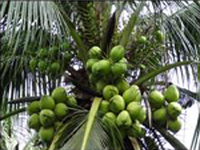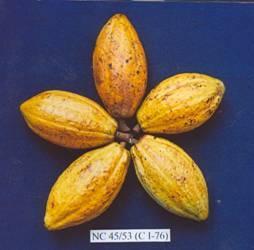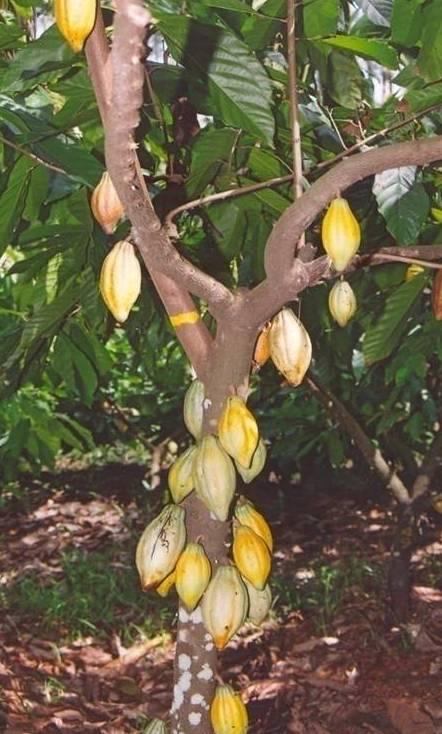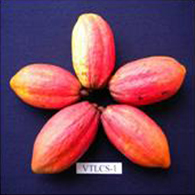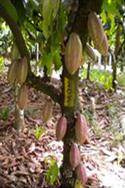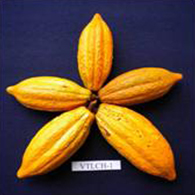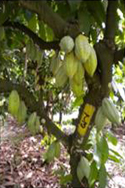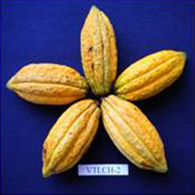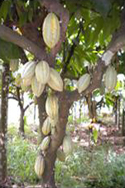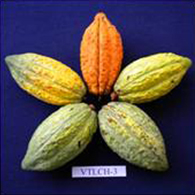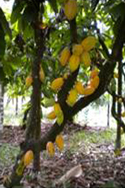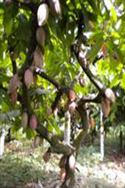

This is a semi tall variety with sweet tender nut water and with higher resistance to root (wilt) disease of coconut. It comes to flowering by 54 months from planting. Its annual yield is 87 nuts/palm, 16.38 kg copra/palm and 10.65 kg oil/palm. In root (wilt) disease affected tracts, it gives an annual yield 65 nuts/palm. The quantity of tender nut water is 290ml. This is released as a variety for tender nut and for cultivation in root (wilt) prevalent areas of Kerala
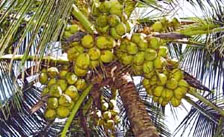
This is an early flowering cultivar and takes about 3-4 years for initial flowering. The average annual yield is 63 nuts/palm/year. It is best suited for tender nut water. This cultivar was released by CPCRI in 1991 for large scale cultivation as tender nut variety.

Kalpasree has superior quality of coconut oil, very sweet tender nut water and meat and is resistant to root (wilt) disease. This is the earliest flowering cultivar and takes about 2.5 to 3 years for flowering. It is found to be resistant to root (wilt) disease. The mean annual yield is 90 nuts/palm with a copra content of 96.3g. This variety is released for root (wilt) prevalent areas of Kerala.
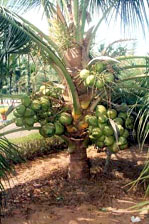
Dwarf variety with yellow fruits, higher average yield of 114 nuts per palm per year under rainfed conditions with estimated copra yield of over 16 kg per palm per year. Recommended for cultivation in Kerala and Karnataka for tender nut purpose.
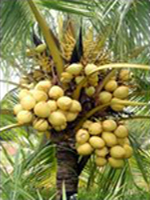
Dwarf with Orange fruits recommended for cultivation in Kerala, Karnataka and Tamil Nadu for tender nut purpose. The average yield is 123 nuts per palm per year under irrigated conditions with estimated copra out turn of 23 kg per palm per year.
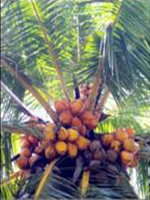
The mean yield is 167 nuts/palm/year, with estimated high copra out turn of 35.9 kg/palm/year or 6.28t/ha copra. The hybrid is suitable for tender nut purpose. This hybrid is recommended for cultivation in Kerala and Karnataka States.
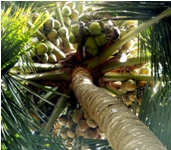
The palms come to bearing early when compared to tall palms. It is a heavy yielder and produces 116 nuts/palm with a range of 100-150 nuts. The copra content in nut is 160-230 g. It is susceptible to drought and hence irrigation is required during summer months. Chandrasankara was released by CPCRI in 1985 for cultivation in Kerala and Karnataka.

The palm comes to bearing by the fourth year of planting. The mean annual yield of nuts is 108 with a range of 70-130 nuts. The copra content is 187g/nut. This hybrid was released by CPCRI in 1991, for large scale cultivation in Kerala, coastal Andhra Pradesh and coastal Maharashtra.

The hybrid palm comes to bearing in about 4-5 years after planting. The annual yield is 109 nuts/ palm with a copra content of 150-210g/nut. The hybrid was released by CPCRI.
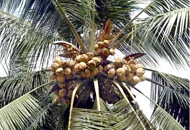
The mean annual yield is 117 nuts per palm. The copra yield is 4.38 t/ha and oil is 3.04 t/ha. The hybrid is suitable for tender nut purpose. This hybrid was recommended for cultivation in Kerala, and Assam.
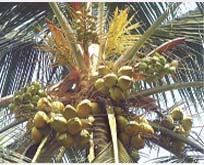
The mean annual yield is 85 nuts per palm. The copra yield is 2.5 t/ha and oil is 1.69 t/ha. This hybrid was recommended for cultivation in root (wilt) disease prevalent tracts of Kerala.
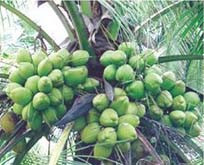
It commences flowering in 67 months after planting in the field. This variety has the potential to produce 22,794 nuts per hectare per year in Tamil Nadu state. The quantity of tender nut water is 290 ml. This is recommended for cultivation in Kerala, East Coast region of Tamil Nadu, Andhra Pradesh and Andaman & Nicobar Islands.
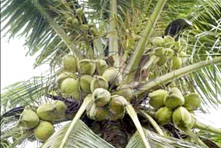
This variety has the potential to produce 23,275 nuts per hectare per year in West Bengal state. The quantity of tender nut water is 448 ml. This is recommended for cultivation in Kerala, Maharashtra, interior zone of Tamil Nadu and coastal zone of Andhra Pradesh
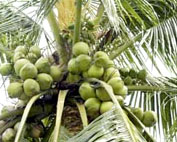
This variety has the potential to produce 80 nuts/palm/year. The quantity of tender nut water is 495 ml. This is recommended for cultivation in Kerala and West Bengal.
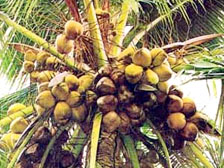
The average annual yield is 100 nuts/palm. The palm grows in all types of soil and it can withstand moisture stress. This cultivar is recommended for cultivation in the states of Kerala, Karnataka, Andhra Pradesh and Maharashtra.
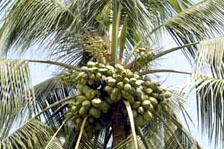
The annual yield of nuts varies from 90 to 200 with an average of 110 nuts/palm. This is recommended for the west coast including Konkan Region, coastal Andhra Pradesh and West Bengal.
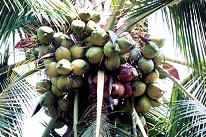
This variety is recommended for ball copra production. It yields around 116 nuts per palm per year with copra content of 176g, under rainfed situations. This is recommended for cultivation in Karnataka, Kerala and Tamil Nadu.
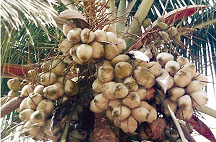
A superior high yielding tall selection with lesser incidence of eriophyid mite infestation. The average nut yield is 118 nuts per palm per year under rainfed conditions with estimated copra yield of 25.5 kg per palm per year. Recommended for Kerala and Karnataka suitable for copra and tender nut purpose.
